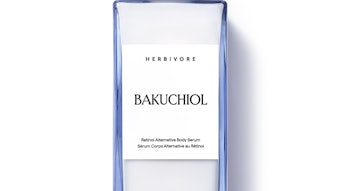“Consumer behavior needs to change for sustainability” was one of the key messages from the recent European and Asia-Pacific editions of the Sustainable Cosmetics Summit. More than 150 senior executives convened at each edition in Paris and Hong Kong to discuss key sustainability issues affecting the beauty industry.
A number of speakers suggested that consumer behavior was becoming a major barrier to sustainable development of the beauty industry. Although operators are implementing a raft of sustainability initiatives, consumer education and recognition of such remains low. Furthermore, lack of consumer demand for green products and ingredients was discouraging brands to make greater commitments.
In a paper presented at the event, the Union for Ethical BioTrade showed awareness of biodiversity and green issues is rising in Asia. Over 70% of Chinese and Korean consumers state they are aware of such issues; however awareness was not translating into demand. Organic Monitor, organizer of the Sustainable Cosmetics Summit, stated the Asia-Pacific comprises less than 10% of global green beauty sales. Furthermore, there remain many ethical questions about cosmetic products in Asia. In addition to the use of animal ingredients in beauty products, animal testing methods also remain common there.
Consumer awareness is also a major issue in Europe. L’Oréal said that it started giving environmental data on some products in accordance with the Grenelle law. However it was discouraged by despondent consumers. The multinational has decided to halt environmental product labeling because consumers could not relate to footprint data.
With companies spending thousands of dollars on life-cycle analyses, panelists asked if it was worth it considering consumers showed little concern.
Lack of consumer awareness was also cited as a factor behind the low take-up rate of sustainable palm oil. Although the industry is calling for more sustainable production, demand is not keeping with supply: only half of RSPO palm oil is sold as sustainable palm oil. Higher consumer awareness of sourcing issues could put pressure on companies to ethically source the vegetable oil, especially in Asia where palm oil plantations are causing deforestation and air pollution.
Discussions also centered on marketing and consumer issues related to green beauty. According to Havas Media Group, 88% of European consumers are hungry for information about how beauty companies source natural ingredients. However, 45% of consumers believe natural and organic claims by beauty brands are not credible. The media agency called for brands to inspire consumers by communicating their sustainability efforts more effectively.
Mei Mei Song of Plaza Premium Lounge called travel retail the “neglected channel” for natural and organic beauty in Asia. In her paper, she said that the growing middle classes and increase in travel time in Asia made airport lounges the ideal platform to educate consumers on such products. She stated that more than 65 million people traveled through Hong Kong International airport in a year, and her company has set up wellness spas at the airport where organic skin care products are marketed to travel passengers.
In another paper, the ayurvedic brand Baidyanath stated distribution was the major hurdle for green beauty brands targeting the Indian market. Jasmin Aromatique suggested green brands take a customized approach when targeting Asian country markets. The Australian brand is opening concept stores across Asia to educate consumers on how organic skin care is linked to health and wellness. And Coop Switzerland stated it is focusing on its Naturaline private label to inform consumers about sustainability and green issues, relaunching natural cosmetics under a private label brand earlier in 2013.
The European and Asia-Pacific editions of the Sustainable Cosmetics Summit raised many questions about sustainability in the beauty industry. With growing interest in environmental footprints, how should metrics be effectively communicated to consumers? What can be done to encourage sustainable consumption—as well as sustainable production—of beauty products and ingredients? Will new sustainable processing and production methods be the answer to green cosmetic formulations? With Asia growing in economic power, when will sustainability and green issues rise in importance? The 2014 editions of the Sustainable Cosmetics Summit aim to address such questions.










